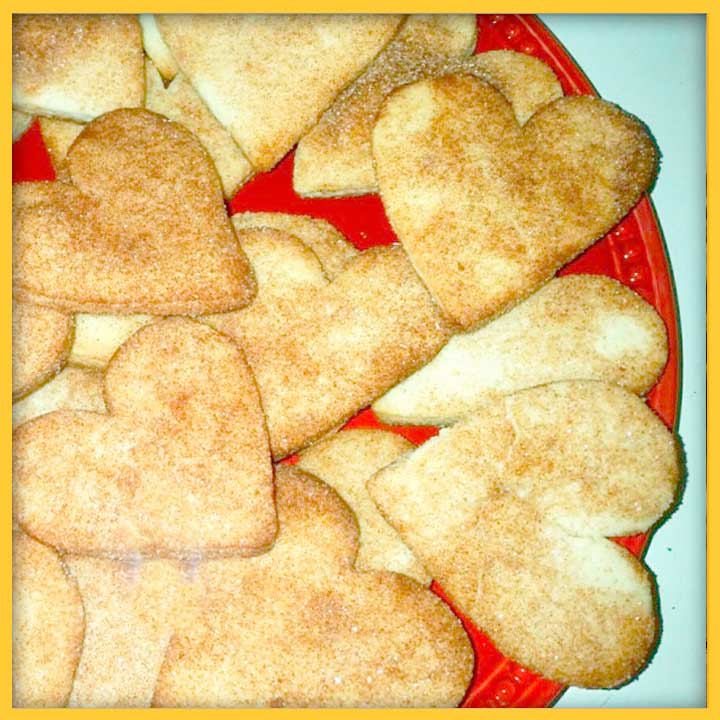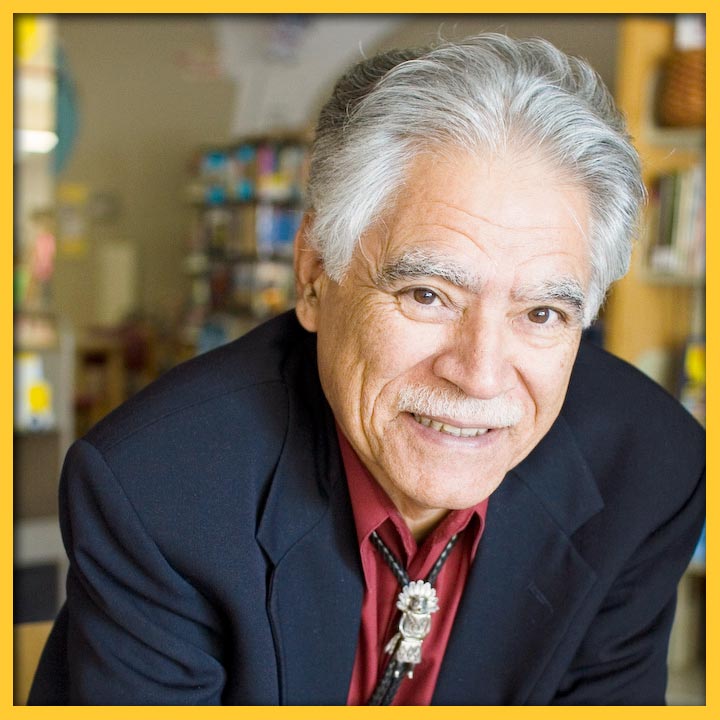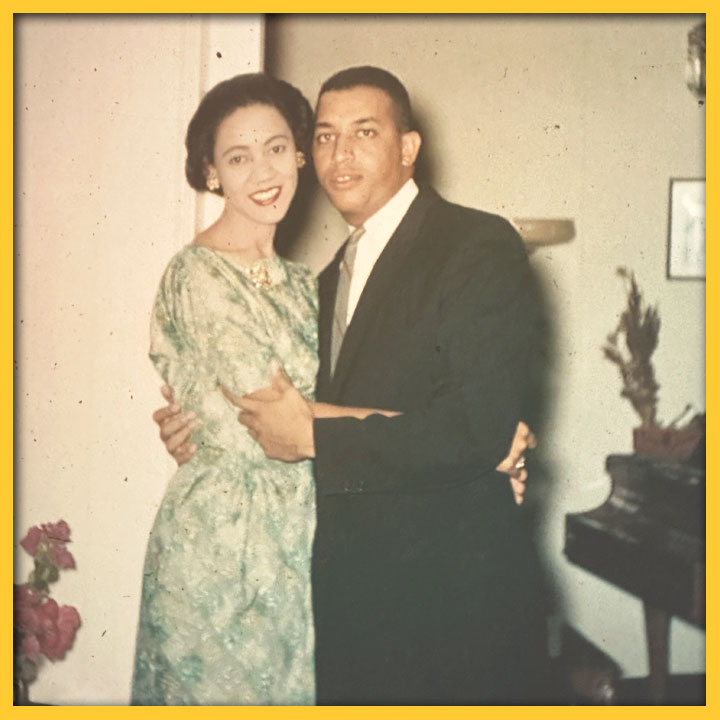
A SWEET AND SPICY MEMORY: BISCOCHITOS IN NEW MEXICO CULTURE
Biscochitos have a far deeper significance than being just sweet treats. They represent family roots. It is the rare Hispanic New Mexico family that does not have its own recipe for biscochitos.
PHOTO CAPTION: New Mexico’s State Cookie: The Biscochito. Courtesy of Vanessa Baca.
SHARE:
In my memory, I am standing next to my grandmother, watching her roll out the dough, deliciously studded with tiny seeds of anise. I have the very important job of cutting the dough into the shapes of stars, hearts, angels and circles. Together, we dip each cookie into sugar and cinnamon before baking them to crisp, golden perfection. To this day, the fragrant hit of anise, cinnamon and sugar take me back to her kitchen during Christmas when she taught me how to make the cookie that is so ubiquitous to New Mexico that it has been officially designated our state cookie – the biscochito.
Dusted in sugar and cinnamon, this variant of a shortbread cookie melts on your tongue. You can enjoy it dipped into your morning coffee; you can nibble it alongside your afternoon tea, or, my favorite, with a glass of evening wine. Traditionally made during the holiday season, this simple cookie plays a significant role in our collective memory. New Mexicans take great pride in our state’s weather, vegetation, and most especially, our cuisine. The biscochito is strongly identified as being one of New Mexico’s most beloved foods, with its origins hearkening back to the lard cookies of Europe and shortbread cookies of Mexico, and even farther back to Imperial Rome, from which the Romance languages of French, Italian, Spanish, Portuguese and Romanian evolved. In France, you have the luscious petit biscuit. In Italy, you have the humble biscotti. In Portugal, you have the delicious biscoito. And in Spain, you have the classic bizcocho, from which our own beloved biscochito came into being.
Biscochitos have a far deeper significance than being just sweet treats. They represent family roots. It is the rare Hispanic New Mexico family that does not have its own recipe for biscochitos. The food of any culture is inherently part of its identity, and the biscochito is no different for us Nuevomexicanos. Ask any native New Mexican about their family recipes and inevitably, the recipe for biscochitos comes up, having been handed down from great-grandmother to grandmother to mother to child. Biscochitos represent our identity, our culture, and most importantly, our history.
Arguably one of the foods most associated with our state, the biscochito’s unique anise flavor makes it instantly recognizable. The biscochito a
The liquid that you use in your biscochito dough also varies widely, ranging from milk to orange juice, brandy to whiskey, sweet wine to amaretto. My paternal great-grandmother Antonia swore that bourbon gave her cookies their taste. My maternal grandmother
The first time I made biscochitos on my own was a few years after the death of my grandmother. Opening her cookbook to that recipe written in her own hand, brought an instant rush of tears to my eyes and a smile to my face. The memory of her teaching me how to make biscochitos is bittersweet, like much of life itself. I have since continued to make them every year and in sharing them with family and friends, I feel that I am sharing part of her spirit and her love and in turn, getting that love back. Biscochitos are many things, but above all they are love and love should always be given freely.
Food and cooking are integral ways of sharing cultural memory and demonstrating affection and hospitality, and the biscochito exemplifies this idea. Learning to make biscochitos from my grandmother and using a method that has been handed down through numerous generations and that is unique yet remains faithful to its roots, has connected me to the larger cultural trifecta of identity, memory and history in New Mexico. Biscochitos are a gift that transcend culture and yet remain firmly enmeshed within the overall identity of our state and our people. Ultimately, it is our culture, our identity and our history that make all of us who we are and connects us to the larger body of humanity.

This column was funded in part by a generous grant from the McCune Foundation.
PASA POR AQUÍ
ADDITIONAL BLOG ARTICLES

REFLECTIONS ON THE LOSS OF A NEW MEXICO CIVIL RIGHTS LEADER
By Carlyn N. Pinkins, M. A.
“The Dr. Harold Baileys of the world should inspire us all to do what we can to leave our communities, our towns and cities – our great state – better places than we found them. While we do our part to create the Dr. Harold Baileys of the future, we should also strive to make sure that the Dr. Harold Baileys of our past and present are never forgotten.”

RUDOLFO ANAYA: CATCHING CULTURES IN BLESS ME, ULTIMA
By Richard Wayne Etulain
Anaya greatly expands the cultural contributions of his novel by combining the usual (Bildungsroman—growing up theme) with the unusual (complex, diverse New Mexico Hispanic culture)…

UP BY OUR BOOTSTRAPS; TWO LIVES IN RETROSPECT
By Finnie Coleman
I found myself fascinated with Dr. McIver’s transition from the stultifying hopelessness of the Segregation Era to the wistful hopefulness of the Civil Rights Era…
SHARE:
DISCLAIMER:
Any views, findings, conclusions or recommendations expressed in this blog post/article does not necessarily represent those of the New Mexico Humanities Council or the National Endowment for the Humanities.
ABOUT THE AUTHOR:

VANESSA BACA
Vanessa Baca is a cook, writer, public relations professional, blogger and podcaster. Her food blog: www.foodinbooks.com, reviews various works of literature and recreates the food references in these books. Her podcast: www.anchor.fm./cookingthebooks, showcases literary cuisine with a variety of guests. She is a native New Mexican, lived briefly in Spain, travels extensively, and has taken cooking lessons in several countries.
